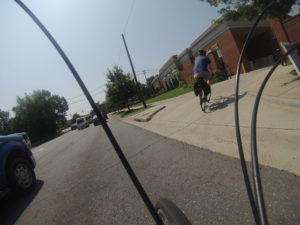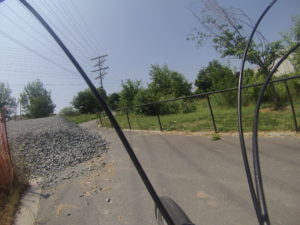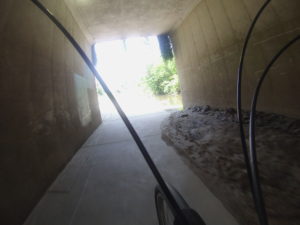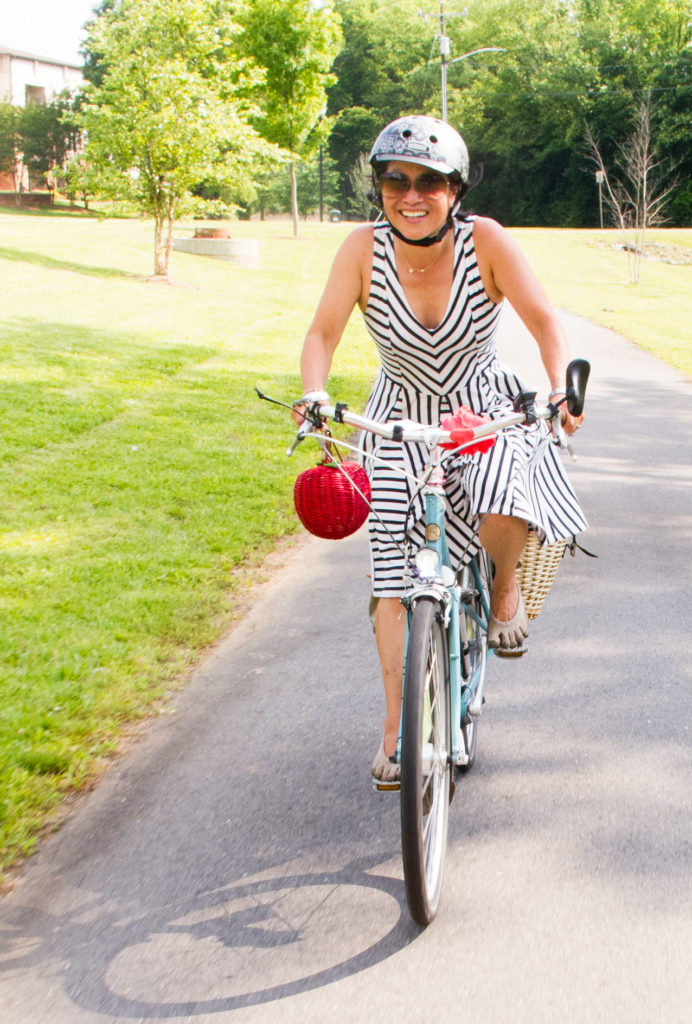
Charlotte is putting a lot of effort into developing greenways with multi-use paths. It seems like their political climate makes it easier to sell creek daylighting and greenway projects than bike-oriented road projects, but for utility cyclists, the creek paths are a mixed bag. One thing I immediately noticed in surveying them is that they’re poorly connected to the street grid. Leaving downtown on Third Street, a designated bikeway, the bridge crosses over the greenway, but doesn’t interact with it. There’s no signage as you pass by, and to get onto it you have to do an awkward hairpin turn into a driveway and down a sidewalk.
This kind of disconnection continues as you use the greenway. I was heading to Target to buy a GoPro battery (those things drain faster than I expected, even shooting stills), and from the greenway, even though you’re passing right by the shopping center, there is no obvious connection to bike up to the street–just several sets of stairs. Eventually I found a narrow sidewalk through a playground area that let me get to the shopping center without hauling the bike up stairs. The design almost seems intentionally keeping the greenway traffic separate from the street traffic.

There were also discontinuities on the path itself. A pile of construction rocks blocked half of the path at one point; mud from an earlier flood filled the path underneath one of the bridges. (Pam said that portions of the pathway are often closed for flooding).
The impression I get is that the idea of a greenway is more politically palatable than the idea of a utility bikeway, and that the languaging and design of the greenway is oriented towards recreational cyclists. Utility cyclists may use portions of the greenway where they are effective, but in general, utility cyclists want their routes to be reliable. If these facilities are going to be identified as part of the transportation network, they need to be treated as any other transportation facility would be; that would require enforcement of obstruction codes, for example.

The flooding problem is more fundamental. The creek is an attractive route because waterways tend to connect interesting places, and creek daylighting projects can be marketed based on being green/sustainable/resilient. But the creek is crossed by multiple arterials, and at each one the pathway has to go either over, under, or through. Over is too expensive, through (at-grade crossings) create difficult and unpleasant intersections, so often the design settles for going under. The problem with that is the road bed height is set based on the creek flood stage, so a pathway 10 feed below the road bed will be underwater a lot.


